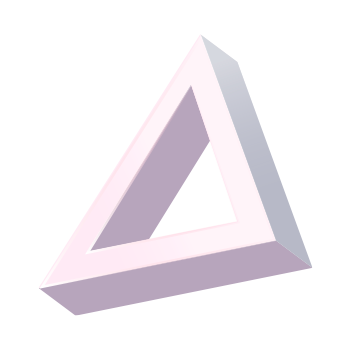We are experts in trust-centered web design.
Some agencies try to wow you with visually acrobatic designs that have a similar appeal to a fireworks display. Boom. Bang. Pop. Other agencies talk about transactional lead generation. They seem to think telling your company's story is a simple arithmetic equation. Input content, output sales.
It doesn't work that way. We operate from a simple premise: If your visitors don't trust you, nothing else matters. Trust builds, grows and protects your brand online, turning suspects into prospects and prospects into buyers. We call this approach "trust-centered web design."
Websites
Our Approach To Websites
A website worthy of your visitors' trust starts with a comprehensive plan. We begin all our website projects by sitting down with you and creating a blueprint that includes gaining a true understanding of your buyers.
Working in batches, our design, content, and development teams will craft the building blocks of your site — wireframes, page mockups, custom modules, templates — and involve you every step of the way.
We believe websites are living, breathing things, so we work with our clients after launch to continually improve their sites. We ensure your site never loses sight of the trust signals necessary to turn visitors into buyers.



What we do
Making great things together
How is Idea Grove’s approach to web design different from other agencies?
Our agency focuses on achieving one thing and one thing only. Trust. That's true for our approach to web design, our approach to content, our approach to public relations and everything else. Are you doing everything possible to earn the buyer's trust? Does your design firm truly understand your business, your product, your buyers? If not, the visual pyrotechnics and lead-gen formulas mean nothing. We have taken a trust-centered approach to web development for years, and are leaders in this approach. We also believe that websites are living things and that the old model of waiting years between redesigns just doesn’t work anymore. Every aspect of PR and digital marketing is aimed at getting people to your site. That site needs to be continually optimized, not just occasionally. For us, website projects don’t have a beginning and an end, because your site should be in a constant state of optimization.
What are some examples of the features of a trust-centered website?
Idea Grove recently compiled a list of 68 tips for designing a trust-centered website, and a comprehensive list would be even longer. But some of the core components of trust-centered websites include:
Learn more about website trust signals here.
What is Idea Grove’s website process like?
We start the website redesign process with a conversation. We ask about business goals and the role your website is expected to play in meeting those goals. We will learn about your buyers and work with you to fill in the gaps that will help us better understand them. We then take that information and come up with a plan for the kind of site we think can best meet your objectives. Once we’ve decided on the site’s structure and functionality, we turn to the look and feel of the site. This is where we talk about images and colors and fonts. In other words, this is the fun part. But we never shirk on the initial planning. As tempting as it can be to start putting the paint on the walls, we have to get the bones right, and that’s why those first few steps are crucially important to giving you a site that not only sparkles visually, but also helps you meet the business goals you’ve been tasked with achieving.
What platforms do you build websites on?
We primarily build websites on two Content Management System (CMS) platforms: WordPress and HubSpot. WordPress is the most popular and trusted CMS in the world, powering a full 40% of the world's websites. Years ago, many large enterprises viewed WordPress as a CMS for smaller businesses, but that is no longer the case. In recent years WordPress has far eclipsed competing CMSs like Drupal and Joomla in enterprise adoption and satisfaction. For clients who are already HubSpot users or who are interested in HubSpot, we recommend HubSpot CMS. The HubSpot platform is easy to work with and allows for visual flexibility. Also, when integrated with the HubSpot marketing platform, it allows you to natively pair your website CMS with your marketing automation tools.
Will I be able to edit my website, or will I need to pay you more to make changes later?
Yes, you will be able to edit your own website with a little guidance and training. This is because we generally avoid hardcoding sites. That’s not to say there won't be some hardcoded elements, but we aim to build sites using a templates-and-modules approach. That doesn’t mean you’ll get a site that looks like everyone else’s website; you will still get something that reflects you and your brand. But because we believe you should be continually modifying and updating your site, we build it in a way that makes that process as easy as possible. It also means it’s something that you don’t necessarily need us to do. At the end of the project, we want to continue working with you to optimize your site, but we will also give you the keys to your new castle.
What is included in your website design projects?
Typically, website projects are the beginning of a longer-term relationship with us. We start with a website redesign. Those typically take between three and six months, but, depending on the size of the site, that could be longer. After the site is completed, we often move into the continuous improvement phase, where we start tracking and analyzing the traffic on your site and how visitors are using it to make recommendations of updates and changes that we think will help you better meet your established goals. That said, we also do website designs as one-time project work. That doesn’t change our process at all. Each website redesign still starts with a conversation about business goals and what is expected from your website in terms of meeting those goals.
What can you tell me about the team that will work on my website?
Our two senior creatives, Megan Chesterton and Cecil Cross, have more than two decades of combined design experience. Our two content leaders, Jarrett Rush and Les Worley, have more than four decades of experience in technology, marketing and journalism. Together, our creative and content teams create the "words and music" for your website.
In this video, Megan and Jarrett discuss the trust-centered approach to website creation. It will give you a sense of their personalities, philosophy and experience.
What are some effective ways I can highlight customer stories in my web design?
As you can see from Idea Grove's own website, our design team prioritizes customer stories, because website visitors trust what others say about you more than what you say about yourself. That is the heart of our design philosophy.
Specific ways to highlight customer stories on your website include:
Let your customers tell your story and your visitors will believe it.
What are website trust badges and why are they important to earning trust?
Trust badges are emblems on your website intended to instill trust in prospective customers. For e-commerce sites, trust badges are most visible during the checkout process, but many sites today use them on their homepage, product pages and About Us pages as well.
Trust badges provide third-party validation to boost your website conversions. Here are the five main types of trust badges:
Download 72 free trust badges to boost e-commerce trust, designed for you by the Idea Grove creative team.

